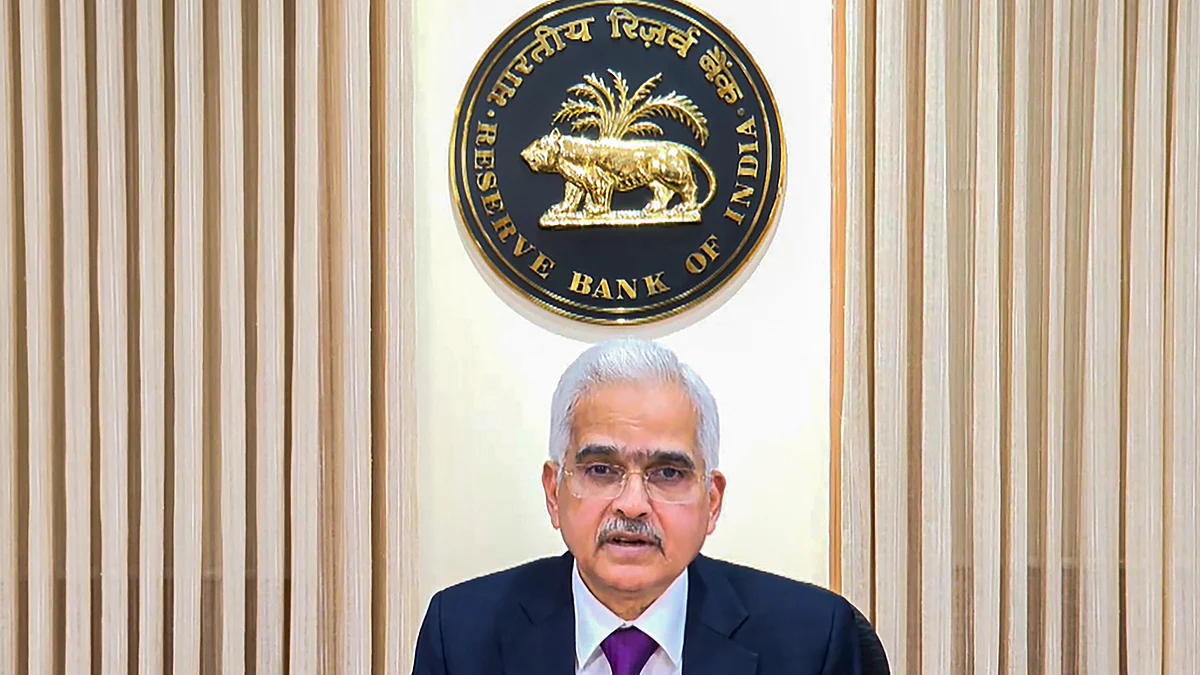RBI holds rates steady amid global decoupling, projects optimistic GDP growth
Shaktikanta Das announced that the benchmark interest rates would remain unchanged at 6.5%, a figure held steady since February 2023

While a decoupling is on across the Atlantic — the European Central Bank (ECB) began cutting rates on Thursday, 7 June, even as the US Federal Reserve keeps them higher for longer — the Reserve Bank of India (RBI) has preferred to stay put, in line with consensus.
On 7 June 2024, RBI governor Shaktikanta Das announced that the benchmark interest rates would remain unchanged at 6.5 per cent, a steady figure since February 2023. The Monetary Policy Committee (MPC), comprising three RBI and three external members, kept the repo rate unchanged for the eighth straight policy meeting, with four out of six MPC members voting in favour.
The MPC last changed rates in February 2023. Annual retail inflation eased slightly to 4.83% in April from 4.85% in March, but it remains well above the MPC's target. Governor Das reaffirmed the RBI's commitment to aligning inflation to 4% on a durable basis, projecting retail inflation in Q1 FY25 at 4.9%, Q2 at 3.8%, Q3 at 4.6%, and Q4 at 4.5%.
In his speech, Das highlighted several positive indicators, including a projected real GDP growth of 7.2% for FY25 and a normal southwest monsoon expected to boost kharif production and enhance water storage in reservoirs. He also noted the soundness and resilience of the banking system, the relative stability of the rupee, and a record high of $651.5 billion in foreign exchange reserves as of 31 May.
The RBI further proposed establishing a digital payments intelligence platform for real-time data sharing and rationalising Foreign Exchange Management Act guidelines related to export-import.
Despite these positive projections, experts have raised concerns. Dharmakirti Joshi, chief economist at CRISIL Ltd, pointed out that while the Fed has the flexibility to pursue tight monetary policy due to robust US growth, Europe faces growth concerns amid elevated inflation.
He noted that the RBI also has policy space to keep rates higher and control CPI inflation, driven significantly by food inflation, which was 8.7 per cent in April compared to non-food inflation at 2.4 per cent.
Joshi pointed out that a normal monsoon could trim headline inflation to 4.5 per cent, and while CRISIL's GDP growth estimate is slightly lower at 6.8 per cent, the RBI remains more optimistic. He also mentioned the possibility of the RBI cutting rates starting in October, revising expectations to two rate cuts instead of three.
Sujata Guhathakurta, president of Debt Capital Markets and Infrastructure Financing Business at Kotak Mahindra Bank, supported the RBI’s decision, emphasizing the balance between growth concerns and inflationary pressures. She noted that maintaining a 6.5 per cent repo rate underscores the RBI's focus on achieving a sustainable 4 per cent inflation target, reflecting a prudent stance in fostering economic growth and financial stability.
Reflecting on the decision's positive impact on the real estate market, Ashwinder R. Singh, Co-Chair of CII's NR Committee on Real Estate and CEO Residential at Bhartiya Urban, argued that steady interest rates enhance affordability for homebuyers and commercial investors, bolstering market sentiment and supporting long-term growth.
Upasna Bhardwaj, chief economist at Kotak Mahindra Bank, observed that the split in voting patterns within the MPC indicates a growing likelihood of a policy pivot. She suggested that robust growth could provide the MPC with enough opportunity to adopt a wait-and-watch mode, anticipating potential policy easing starting from October.
The Sensex and Nifty extended their morning gains, rising over 1 per cent around noon on 7 June after the RBI raised India's FY25 real GDP forecast to 7.2 per cent from the earlier 7 per cent. Home loan interest rates and equated monthly installments (EMIs) will remain unchanged, ensuring financial stability for borrowers as banks have linked all retail floating-rate loans to the repo rate since October 2019.
The RBI's cautious yet optimistic stance reflects a nuanced approach to navigating the complexities of domestic and global economic dynamics, balancing growth ambitions with inflation management.
Follow us on: Facebook, Twitter, Google News, Instagram
Join our official telegram channel (@nationalherald) and stay updated with the latest headlines